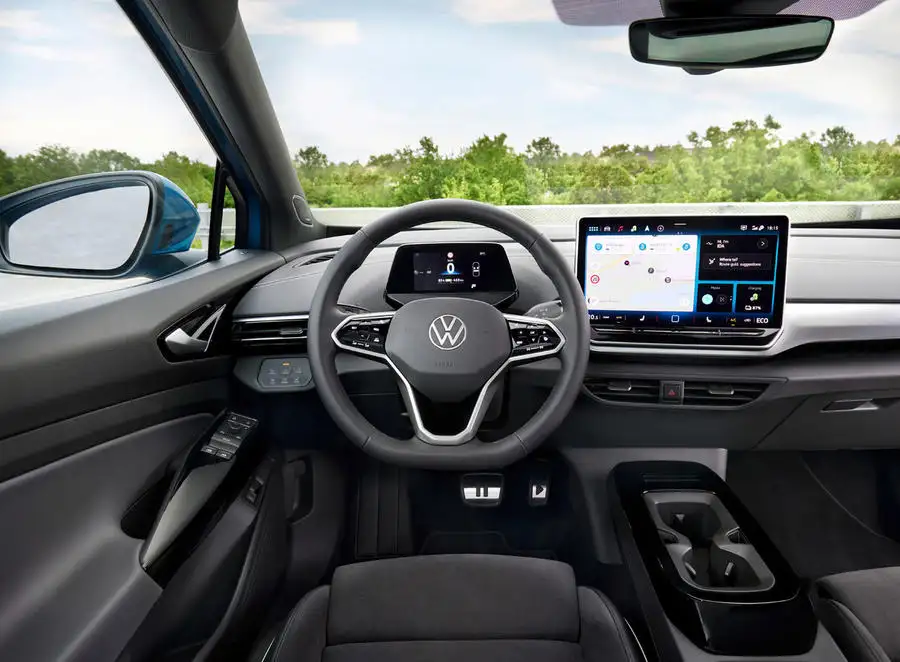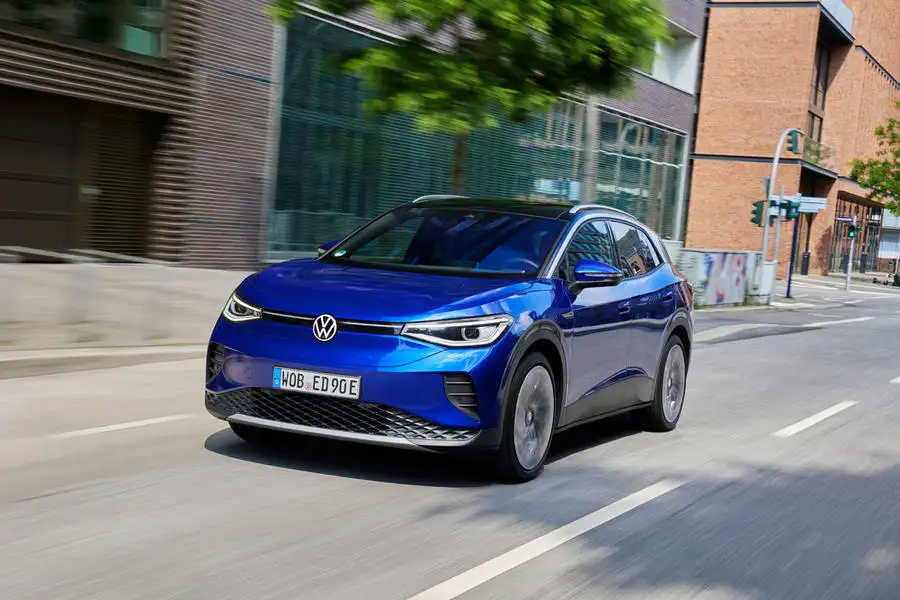The VW ID 4 gets stronger yet more efficient powertrain and answers to criticism of interior quality in our first drive of the model.
Australians will get their first taste of the updated VW ID 4 before mid-2024, but it’s been a rough start to life for the Volkswagen ID 4 which has already been on sale in Europe.
The mid-sized electric crossover’s fortunes were initially hit by the pandemic-related shutdowns and lockdowns. Then, just when things looked to be taking a turn for the better, component supply bottlenecks caused by the global semiconductor shortage and the Russian invasion of Ukraine further conspired to delay deliveries. And all this piled on top of criticisms of the EV’s performance, range, sub-par interior quality and annoying control layout in a market segment that isn’t exactly short of rivals.
Now, after a change of boss and a return to some sort of normality throughout its global operations, Volkswagen is ringing the changes to what has become its best-selling EV worldwide, intending to answer those aforementioned criticisms.
In what’s billed as a running change, rather than a facelift, the 2024-model-year ID 4 has received an updated drivetrain and other revisions related to power-electrics software, and here we’re trying them for the first time in a pilot-production car. The model is said to launch in Australia by June 2024 according to the local arm.
The ID 4 receives an upgraded interior with a larger central touchscreen that operates with updated infotainment software and menus; illumination for the touch-sensitive sliders that control the audio volume and the climate control; a new-look steering wheel; and the characteristic gear selector rocker has become a column stalk.
The updated drivetrain features the rear-axle-mounted motor that Volkswagen recently introduced on the new VW ID 7 saloon for both single-motor, rear-wheel-drive ID 4 models (like ours) and dual-motor, all-wheel-drive ones.
With 60kW and 235Nm more than the motor produced up until now, the AP550 unit gives the rear-wheel-drive ID 4 Pro Performance 210kW and 545Nm. The all-wheel-drive ID 4 Pro 4Motion receives a 37kW overall boost, taking its peak power up to 220kW. And the range-topping, likewise driven VW ID 4 GTX gains an extra 30kW, taking it up to 250kW.
The motor’s increase in potency is achieved in part through a revision to the rotor and coil designs and a new external water heat sink, which is aimed at reducing heat build-up under extended constant-throttle running.
In combination with a revised single-speed reduction gearbox, the new motor predictably makes the ID 4 feel more urgent at all times, with stronger step-off and rolling acceleration. While it was always smooth and highly refined, the delivery is also noticeably more progressive and linear than before.
Volkswagen isn’t going into detail yet, but it does say 0-100km/h times have been improved “significantly” across the range (as has the limited top speed, from 160km/h to 180km/h.)
With greater thermal stability, the new motor is also claimed to offer more reproducible performance, meaning less trailing off of acceleration after repeated prods of the throttle.
The ID 4 also now features a revised inverter with an updated software package for more efficient conversion of the DC electricity stored in the battery to the AC electricity used by the motor.
The ID 4 Pro Performance retains its 77kWh battery pack, but this too has been reworked. The lithium ion unit receives a new charging management system that allows it to be preconditioned (cooled or heated) via a revised Vehicle Route Planner function embedded within the sat-nav. The maximum charging rate has also been increased from 135kW to 175kW on all-wheel-drive versions, although the rear-drivers regrettably remain as was.
The car’s dynamics are enhanced by changes to the steering, which now provides greater feedback and has better self-centring than before.
The optional Dynamic Chassis Control system that governs the adaptive dampers has been refined, gaining new software mapping and additional sensors, giving the ID 4 a smoother and more controlled ride over any given road surface.
The changes inside go some way to answering the popular criticism, particularly those to the controls. These are mainly found on the new 12.9-inch infotainment touchscreen, which has simpler menus and a more advanced conversational voice control system than the old 10.0-inch and optional 12.0-inch units.
However, while it is now more intuitive to operate and offers greater oddment storage within the centre console, the ID 4 is still short on perceived quality and solidity compared with some rivals.
We will have to wait until Volkswagen provides full details of performance, range and pricing before we can make a definitive call on the changes brought to the ID 4, but our time in this early car suggests its potential is now better fulfilled than at any time since its introduction to the German brand’s line-up, being more powerful and more engaging to drive, more comfortable and, with its improved user interface, generally easier to live with.





